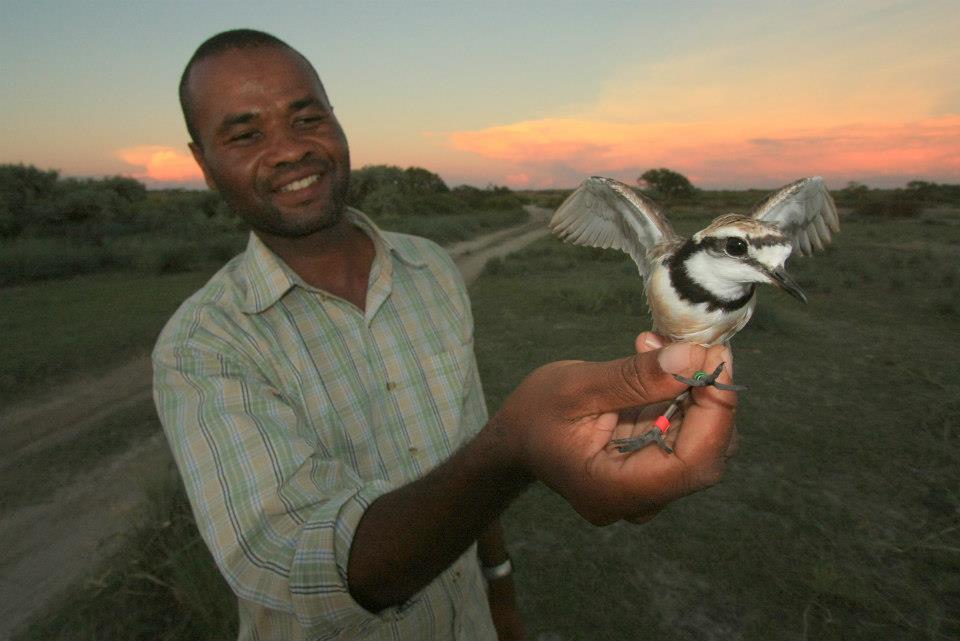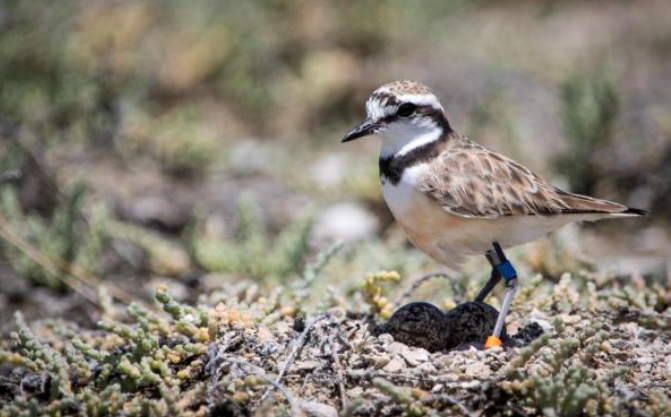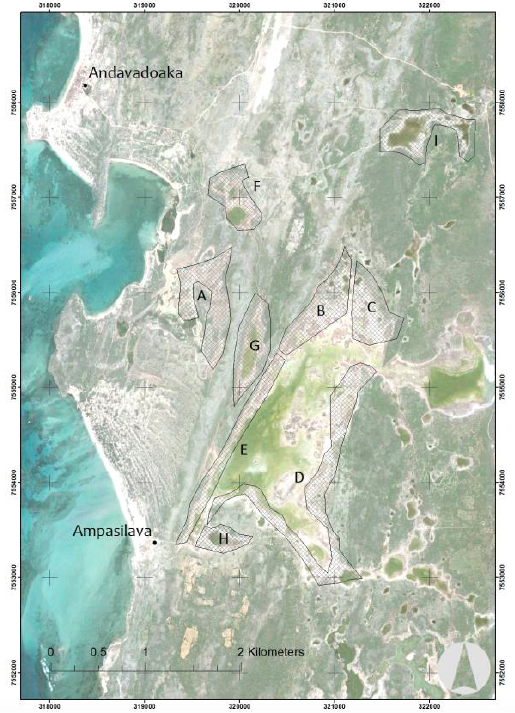Madagascar Plover on:
[Wikipedia]
[Google]
[Amazon]
The Madagascar plover (''Anarhynchus thoracicus''), also known as the black-banded plover, is a small (37 g) monogamous shorebird in the family
 Adult males and females have sexually monomorphic plumage, however females are slightly heavier than males and have longer wings, suggesting slight
Adult males and females have sexually monomorphic plumage, however females are slightly heavier than males and have longer wings, suggesting slight
 The Madagascar plover is the only plover species endemic to Madagascar, and is present mainly on the west and south coasts from Andriamandroro to Tapera. It is estimated that this population occupies 139 km2, and breeds from the
The Madagascar plover is the only plover species endemic to Madagascar, and is present mainly on the west and south coasts from Andriamandroro to Tapera. It is estimated that this population occupies 139 km2, and breeds from the
 A Madagascar plover nest comprises a small scrape in the ground, most commonly in dry soil in
A Madagascar plover nest comprises a small scrape in the ground, most commonly in dry soil in
 The Madagascar plover is classified as Vulnerable by the
The Madagascar plover is classified as Vulnerable by the
BirdLife Species Factsheet.
{{Taxonbar, from=Q520961
Charadriidae
The bird family Charadriidae includes the plovers, dotterels, and lapwings. The family contains 69 species that are divided into 10 genera.
Taxonomy
The family Charadriidae was introduced (as Charadriadæ) by the English zoologist William El ...
, native to western Madagascar
Madagascar, officially the Republic of Madagascar, is an island country that includes the island of Madagascar and numerous smaller peripheral islands. Lying off the southeastern coast of Africa, it is the world's List of islands by area, f ...
. It inhabits shores of lagoons, coastal grasslands, and breeds in salt marshes. These plovers mainly nest in open grassland and dry mudflats surrounding alkaline lakes.Long, P.R., Zefania, S., ffrench-Constant, R.H. and Székely, T. (2008) ‘Estimating the population size of an endangered shorebird, the Madagascar plover, using a habitat suitability model’, Animal Conservation, 11(2), pp. 118–127Zefania, S., ffrench-Constant, R., Long, P. and Szekely, T. (2008) ‘Breeding distribution and ecology of the threatened Madagascar Plover Charadrius thoracicus’, Ostrich, 79(1), pp. 43–51 The species is classified as vulnerable by the IUCN
The International Union for Conservation of Nature (IUCN) is an international organization working in the field of nature conservation and sustainable use of natural resources. Founded in 1948, IUCN has become the global authority on the status ...
because of its low breeding success, slow reproductive rate, and weak adaptation to increasing habitat loss, leading to declining population numbers.
Description
 Adult males and females have sexually monomorphic plumage, however females are slightly heavier than males and have longer wings, suggesting slight
Adult males and females have sexually monomorphic plumage, however females are slightly heavier than males and have longer wings, suggesting slight sexual dimorphism
Sexual dimorphism is the condition where sexes of the same species exhibit different Morphology (biology), morphological characteristics, including characteristics not directly involved in reproduction. The condition occurs in most dioecy, di ...
. The breeding plumage of the Madagascar plover consists of a white forehead bordered by a black bar and a black crown band, with a white crown band just above. An extra black band is present running from behind the eye, around the hind neck, along with a thick black band across upper chest. The rest of the face is white. Adults weigh 31-43 g, with females weighing on average 37.8 g and males 36.4 g.Zefania, S., Emilienne, R., Faria, P.J., Bruford, M.W., Long, P.R. and Székely, T. (2010) ‘Cryptic sexual size dimorphism in Malagasy plovers Charadriusspp’, Ostrich, 81(3), pp. 173–178 From the mantle and scapular feathers to the rump, the plumage is greyish brown. The central two feathers of the tail are grey/brown, with the outer feathers a lighter shade with darker distal bands and white tips. The underparts are white, with a rufous lower belly and undertail coverts. The bill, legs and eyes are black during the breeding season. Outside of breeding season, the species' appearance is duller, with the black markings more brown. Downy young weigh about 7.1 g and have a lime-green bill that turns brownish black towards the tip, with brown eyes and dull lime-green legs.Safford, R., Hawkins, F., Pearson, D.J., Gale, J. and Small, B. (2013) The birds of Africa: Volume VIII: The Malagasy region: Madagascar, Seychelles, Comoros, Mascarenes. London, United Kingdom: Poyser. Pg 311-312
Calls
Calling consists of a short ‘pip’ repeated every 2-3 s, as well as a ‘pipipipreeeet’ single note repeated rapidly 3-6 times. Adults call during the breeding season when joining groups, flying, alarming, and attending chicks. The alarm call is a ‘qui qui qui qui’ whilst flapping wings. When the predator is clear a ‘tick tick’ sound can be heard.Distribution and habitat
 The Madagascar plover is the only plover species endemic to Madagascar, and is present mainly on the west and south coasts from Andriamandroro to Tapera. It is estimated that this population occupies 139 km2, and breeds from the
The Madagascar plover is the only plover species endemic to Madagascar, and is present mainly on the west and south coasts from Andriamandroro to Tapera. It is estimated that this population occupies 139 km2, and breeds from the Mahavavy River
The Mahavavy or Mahavavy-Nord River is a river of northern Madagascar in the region of Diana. It has its sources at the Maromokotra peak in the Tsaratanana Massif and flows north to the Indian Ocean. The main city along the river is Ambilobe at ...
delta in the north to Fort-Dauphin in the south-east. Nests are predominantly found in sparsely vegetated habitats such as grasslands, coastal mudflats, salt marshes, edges of alkaline lakes and mangroves, and breeding does not extend more than a few kilometers inland. The Madagascar plover is not known to migrate.
Behaviour and ecology
The breeding success of Madagascar plovers is very low, with an estimated 22.9% nest success, long re-nesting intervals (52 days), and a low rate of re-nesting. Lake Tsimanampetsotsa and Marambitsy Bay have the highest number of nesting plovers. The breeding season is between August and June, with peak egg laying between April and December. Two clutches of eggs are laid each season.del Hoyo, J., Elliott, A. and Sargatal, J. (1996) Handbook of the Birds of the World. Vol. 3: Hoatzin to Auks. Lynx Edicions, Barcelona Madagascar plovers are long-lived birds with life-expectancies of approximately 9 years, although there is evidence that individuals can live much longer than this.Jones, W., Eberhart-Hertel, L.J., Freckleton, R.P., Hoffman, J.I., Krüger, O., Sandercock, B.K., Vincze, O., Zefania, S. and Székely, T. (2022), Exceptionally high apparent adult survival in three tropical species of plovers in Madagascar. J Avian Biol, 2022:. https://doi.org/10.1111/jav.02911Nesting
 A Madagascar plover nest comprises a small scrape in the ground, most commonly in dry soil in
A Madagascar plover nest comprises a small scrape in the ground, most commonly in dry soil in grasslands
A grassland is an area where the vegetation is dominated by grasses (Poaceae). However, sedge ( Cyperaceae) and rush ( Juncaceae) can also be found along with variable proportions of legumes such as clover, and other herbs. Grasslands occur ...
, open mudflats
Mudflats or mud flats, also known as tidal flats or, in Ireland, slob or slobs, are coastal wetlands that form in intertidal areas where sediments have been deposited by tides or rivers. A global analysis published in 2019 suggested that tidal ...
, bordering mangroves
A mangrove is a shrub or tree that grows mainly in coastal saline or brackish water. Mangroves grow in an equatorial climate, typically along coastlines and tidal rivers. They have particular adaptations to take in extra oxygen and remove sal ...
and alkaline lakes. Scrapes are lined with material from plants, both fresh and dry, and can also include small pebbles and shell debris. One to two eggs are usually laid at 2-3 day intervals. They measure about 33 x 24 mm and have a volume of 8–9 cm3. Nests are commonly found near living vegetation (varying with environment) and are on average located 2–50 m away from the water's edge, as water bodies are vital for feeding. Both parents help to build and defend the nest, with mate site fidelity and pair-bonding being high.
Both sexes contribute to the incubation of the eggs with equal effort, with incubation beginning 1–3 days after the last egg is laid. Eggs may be shaded from the sun before incubation begins. Eggs are incubated for the majority of the day and shaded during the hottest parts of the day. The incubation period lasts for 27–28 days after the last egg is laid. When eggs are unattended they are covered for protection and camouflage, and when approached by predators they are defended by both parents. Eggs take approximately 30 days to hatch, and both parents participate in brood care. Chicks are able to fly around 27–37 days after hatching, and fledge 1–5 days later.
Conservation
 The Madagascar plover is classified as Vulnerable by the
The Madagascar plover is classified as Vulnerable by the IUCN
The International Union for Conservation of Nature (IUCN) is an international organization working in the field of nature conservation and sustainable use of natural resources. Founded in 1948, IUCN has become the global authority on the status ...
, and may have to be uplisted to Endangered
An endangered species is a species that is very likely to become extinct in the near future, either worldwide or in a particular political jurisdiction. Endangered species may be at risk due to factors such as habitat loss, poaching, inv ...
status soon.
The small population is believed to be undergoing continuous decline due to pressure on its wetland
A wetland is a distinct semi-aquatic ecosystem whose groundcovers are flooded or saturated in water, either permanently, for years or decades, or only seasonally. Flooding results in oxygen-poor ( anoxic) processes taking place, especially ...
habitat. The species is the rarest breeding plover in Madagascar, and it is estimated that the endemic population consists of 3100 ± 396 total individuals, implying 1800-2300 mature birds. Additionally, nesting success is very low, and life history traits do not enable the species to reproduce quick enough to recover.
The main threat is habitat loss or degradation, mainly due to the conversion of many natural plover wetland habitats to rice paddies and shrimp farms. As the population is restricted to specialised wetland habitats, they are especially vulnerable to habitat degradation. Cattle may aid the population by creating space to nest, but present the inevitable risk of trampling of birds and nests. The Madagascar plover's life history traits such as small clutch sizes, long incubation periods, slow chick growth and long re-nesting intervals make it less able to withstand environmental change, and thus very sensitive to habitat threats.
Three nesting localities are located in protected national park
A national park is a nature park designated for conservation (ethic), conservation purposes because of unparalleled national natural, historic, or cultural significance. It is an area of natural, semi-natural, or developed land that is protecte ...
s: Lake Tsimanampetsotsa, Kirindy Mitea, and Baly Bay. Control of predators has been suggested as a conservation measure, however this may be difficult as the predators themselves may be endemic to Madagascar, endangered, or protected species.
References
External links
BirdLife Species Factsheet.
{{Taxonbar, from=Q520961
Madagascar plover
The Madagascar plover (''Anarhynchus thoracicus''), also known as the black-banded plover, is a small (37 g) monogamous shorebird in the family Charadriidae, native to western Madagascar. It inhabits shores of lagoons, coastal grasslands, and bre ...
Endemic birds of Madagascar
Madagascar plover
The Madagascar plover (''Anarhynchus thoracicus''), also known as the black-banded plover, is a small (37 g) monogamous shorebird in the family Charadriidae, native to western Madagascar. It inhabits shores of lagoons, coastal grasslands, and bre ...
Taxa named by Charles Wallace Richmond
Taxonomy articles created by Polbot